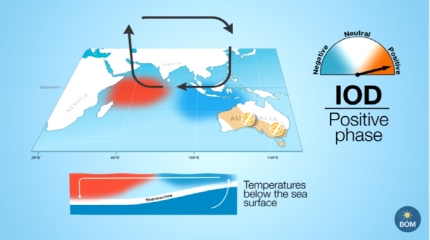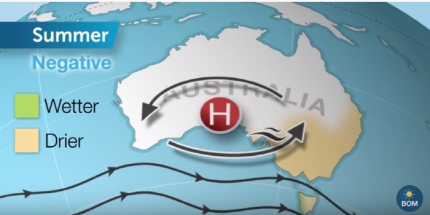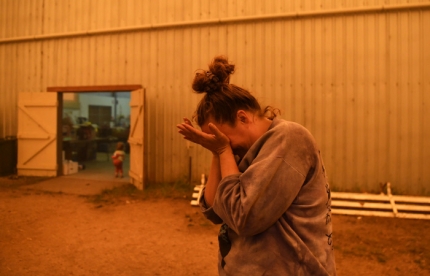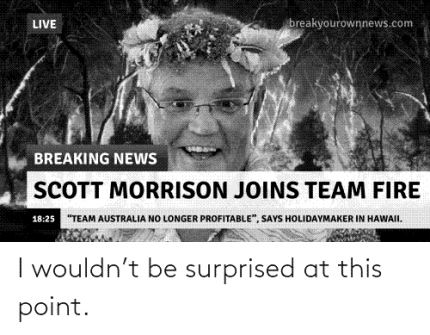The Organized Mind: Thinking Straight in the Age of Information Overload: Daniel J. Levitin: 9780147516312: Amazon.com: Books


Listen
New York Times bestselling author and neuroscientist Daniel J. Levitin shifts his keen insights from your brain on music to your brain in a sea of details.
The information age is drowning us with an unprecedented deluge of data. At the same time, we’re expected to make more—and faster—decisions about our lives than ever before. No wonder, then, that the average American reports frequently losing car keys or reading glasses, missing appointments, and feeling worn out by the effort required just to keep up.
But somehow some people become quite accomplished at managing information flow. In The Organized Mind, Daniel J. Levitin, PhD, uses the latest brain science to demonstrate how those people excel—and how readers can use their methods to regain a sense of mastery over the way they organize their homes, workplaces, and time.
With lively, entertaining chapters on everything from the kitchen junk drawer to health care to executive office workflow, Levitin reveals how new research into the cognitive neuroscience of attention and memory can be applied to the challenges of our daily lives. This Is Your Brain on Music showed how to better play and appreciate music through an understanding of how the brain works. The Organized Mind shows how to navigate the churning flood of information in the twenty-first century with the same neuroscientific perspective.
The information age is drowning us with an unprecedented deluge of data. At the same time, we’re expected to make more—and faster—decisions about our lives than ever before. No wonder, then, that the average American reports frequently losing car keys or reading glasses, missing appointments, and feeling worn out by the effort required just to keep up.
But somehow some people become quite accomplished at managing information flow. In The Organized Mind, Daniel J. Levitin, PhD, uses the latest brain science to demonstrate how those people excel—and how readers can use their methods to regain a sense of mastery over the way they organize their homes, workplaces, and time.
With lively, entertaining chapters on everything from the kitchen junk drawer to health care to executive office workflow, Levitin reveals how new research into the cognitive neuroscience of attention and memory can be applied to the challenges of our daily lives. This Is Your Brain on Music showed how to better play and appreciate music through an understanding of how the brain works. The Organized Mind shows how to navigate the churning flood of information in the twenty-first century with the same neuroscientific perspective.
Follow the Author
Daniel J. Levitin
Editorial Reviews
Review
“[An] impressively wide-ranging and thoughtful work...The Organized Mind is an organized book, but it also rewards dipping in at any point, for there are fascinating facts and examples throughout.”—The Wall Street Journal
“From how not to lose your keys to how to decide when the risks of surgery are worth it, Levitin focuses on smart ways to process the constant flow of information the brain must deal with.”—The Washington Post
“[M]ore than a self-help book...Levitin's insights into sleep, time, socializing and decision-making are profound.”—San Jose Mercury News
“[An] ingenious combination of neuroscience and self-help.”—Kirkus Reviews
“Dan Levitin has more insights per page than any other neuroscientist I know. The Organized Mind is smart, important, and as always, exquisitely written.”—Daniel Gilbert, Harvard University, author of Stumbling on Happiness
“Combine genuine knowledge and scholarship with plain common sense and what do you get? A book that is really worth reading: Dan Levitin’s The Organized Mind.”—The Honorable George P. Shultz, 60th U. S. Secretary of State
“There are surprising parallels between Levitin’s work and mine. Today’s environment in war, business, and just about everything else has increased in speed and complexity to the point where the essential quality required for success is adaptability. The Organized Mind provides the latest neuroscience on cognitive adaptability and how to apply it to so that leaders can excel. It is a tremendous achievement, and a must read for leaders at every level.”—General Stanley McChrystal, U. S. Army (ret.)
“A brilliant and engaging book about the science of thinking. The Organized Mind provides the tools that we all need to understand and manage the deluge of information that assaults us every day.”—Jerome Groopman, MD and Pamela Hartzband, MD, Harvard Medical School, authors of Your Medical Mind
“A profound piece of work. Levitin documents the mismatch between our narrow bandwidth hunter-gatherer minds and the multitasking chaos of today’s world. He even shows us how to stay sane in environments that are constantly tempting us to stretch ourselves hopelessly thin.”—Philip E. Tetlock, Wharton School, University of Pennsylvania
“An erudite synthesis of Levitin’s own contributions, recent advances in our understanding of attention and memory, and a deep perspective on the ways the human mind works.”—Stanley Prusiner, M.D. Nobel Laureate, director of the Institute for Neurodegenerative Diseases, University of California, San Francisco
“Daniel Levitin’s book follows in the ancient tradition of knowledge as a guide to a better life. Discover the creative power of organized thought, whether you are a writer or a scientist, a disorganized mess or a super robot seeking new frontiers of effectiveness.”—Eric Kaplan, co-executive producer and writer, The Big Bang Theory, writer, The Simpsons and Flight of the Conchords
“An eloquent spokesperson for our field. Levitin writes about the brain with an ease and familiarity that is captivating.”—The late David Hubel, Nobel Laureate in honor of discoveries concerning information processing in the human visual system
“Fascinating...Combing neuroscience and cognitive psychology, the Organized Mind underscores the critical importance of individuals taking charge of their own attentional and memory systems so they can lead optimally productive and satisfying lives. Invaluable insights are offered with regard to organizing our homes, social world, time, decision-making, and business world.”—Nadine J. Kaslow, Ph.D., president of the American Psychological Association and professor and vice chair, Emory University School of Medicine
“This book is far more than tips on how to think clearly and manage information overload. It is also a tour through some of the most exciting aspects of contemporary neuroscience and cognitive science, with a specific emphasis on implications for everyday life. Anyone who has ever wondered about the mind will find much that is fascinating and useful in these pages.”—Stephen Kosslyn, dean, Minerva Schools of Arts and Sciences at the Keck Graduate Institute, former chair, department of psychology, Harvard University
“Running a major PBS television series on tight budgets and turnarounds requires organization and efficiency and sometimes a little magic too. Levitin’s behind the curtain peek at the brain’s inner workings of decision-making provides that extra bit of magic—and would make a fascinating documentary in and of itself!”—Pamela Hogan, Emmy award-winning Producer for PBS
“In the age of TMI, we all need better organized minds. With characteristically clear prose and scientific insight, Dan Levitin gives us tips on how to get or mental closets in order. I really enjoyed this book.”—Joseph LeDoux, Center for Neural Science, New York University
“Dan Levitin has done it again. Having explained music and the brain, now he shows us the best, most effective ways to organize the rest of our life by giving us key insights into how the brain works. His style is so appealing, his knowledge so deep and practical, that we learn, from The Organized Mind, not only why we do what we do, but how, potentially, we can run our lives more smoothly, efficiently, and even happily.”—Cathy N. Davidson, director, The Futures Initiative, City University of New York
“Using the latest information on the brain and how it works, Levitin presents a series of ideas on how to organize one's life and business. Essential reading for anyone who aspires to be highly effective. Or even find their keys!”—David Eidelman, MD, dean of the McGill University Medical School
“The Organized Mind reads like a movie— not the dry tome you might expect. It’s an exciting tour through the science of productivity and how to best manage your thinking to get things done—and be more creative at the same time.”—David Allen, author of Getting Things Done
Read less
About the Author
Daniel J. Levitin, Ph.D., is the New York Times bestselling author of This Is Your Brain on Music, The World in Six Songs, The Organized Mind, and Weaponized Lies. His work has been translated into 21 languages. An award-winning scientist and teacher, he is Founding Dean of Arts & Humanities at the Minerva Schools at KGI, a Distinguished Faculty Fellow at the Haas School of Business, UC Berkeley, and the James McGill Professor Emeritus of Psychology and Music at McGill University, Montreal, where he also holds appointments in the Program in Behavioural Neuroscience, The School of Computer Science, and the Faculty of Education. Before becoming a neuroscientist, he worked as a session musician, sound engineer, and record producer working with artists such as Stevie Wonder and Blue Oyster Cult. He has published extensively in scientific journals as well as music magazines such as Grammy and Billboard. Recent musical performances include playing guitar and saxophone with Sting, Bobby McFerrin, Rosanne Cash, David Byrne, Cris Williamson, Victor Wooten, and Rodney Crowell.
Excerpt. © Reprinted by permission. All rights reserved.
One of the best students I ever had the privilege of meeting was born in communist Romania, under the repressive and brutal rule of Nicolae . Although his regime collapsed when she was eleven, she remembered well the long lines for food, the shortages, and the economic destitution that lasted far beyond his overthrow. Ioana was bright and curious, and although still young, she had the colors of a true scholar: When she encountered a new scientific idea or problem, she would look at it from every angle, reading everything she could get her hands on. I met her during her first semester at university, newly arrived in North America, when she took my introductory course on the psychology of thinking and reasoning. Although the class had seven hundred students, she distinguished herself early on by thoughtfully answering questions posed in class, peppering me with questions during office hours, and constantly proposing new experiments.
I ran into her one day at the college bookstore, frozen in the aisle with all the pens and pencils. She was leaning limply against the shelf, clearly distraught.
“Is everything all right?” I asked.
“It can be really terrible living in America,” Ioana said.
“Compared to Soviet Romania?!”
“Everything is so complicated. I looked for a student apartment. Rent or lease? Furnished or unfurnished? Top floor or ground floor? Carpet or hardwood floor . . .”
“Did you make a decision?”
“Yes, finally. But it’s impossible to know which is best. Now . . .” her voice trailed off.
“Is there a problem with the apartment?”
“No, the apartment is fine. But today is my fourth time in the bookstore. Look! An entire row full of pens. In Romania, we had three kinds of pens. And many times there was a shortage—no pens at all. In America, there are more than fifty different kinds. Which one do I need for my biology class? Which one for poetry? Do I want felt tip, ink, gel, cartridge, erasable? Ballpoint, razor point, roller ball? One hour I am here reading labels.”
Every day, we are confronted with dozens of decisions, most of which we would characterize as insignificant or unimportant—whether to put on our left sock first or our right, whether to take the bus or the subway to work, what to eat, where to shop. We get a taste of Ioana’s disorientation when we travel, not only to other countries but even to other states. The stores are different, the products are different. Most of us have adopted a strategy to get along called satisficing, a term coined by the Nobel Prize winner Herbert Simon, one of the founders of the fields of organization theory and information processing. Simon wanted a word to describe not getting the very best option but one that was good enough. For things that don’t matter critically, we make a choice that satisfies us and is deemed sufficient. You don’t really know if your dry cleaner is the best—you only know that they’re good enough. And that’s what helps you get by. You don’t have time to sample all the dry cleaners within a twenty-four-block radius of your home. Does Dean & DeLuca really have the best gourmet takeout? It doesn’t matter—it’s good enough. Satisficing is one of the foundations of productive human behavior; it prevails when we don’t waste time on decisions that don’t matter, or more accurately, when we don’t waste time trying to find improvements that are not going to make a significant difference in our happiness or satisfaction.
All of us engage in satisficing every time we clean our homes. If we got down on the floor with a toothbrush every day to clean the grout, if we scrubbed the windows and walls every single day, the house would be spotless. But few of us go to this much trouble even on a weekly basis (and when we do, we’re likely to be labeled obsessive-compulsive). For most of us, we clean our houses until they are clean enough, reaching a kind of equilibrium between effort and benefit. It is this cost-benefits analysis that is at the heart of satisficing (Simon was also a respected economist).
Recent research in social psychology has shown that happy people are not people who have more; rather, they are people who are happy with what they already have. Happy people engage in satisficing all of the time, even if they don’t know it. Warren Buffett can be seen as embracing satisficing to an extreme—one of the richest men in the world, he lives in Omaha, a block from the highway, in the same modest home he has lived in for fifty years. He once told a radio interviewer that for breakfasts during his weeklong visit to New York City, he’d bought himself a gallon of milk and a box of Oreo cookies. But Buffett does not satisfice with his investment strategies; satisficing is a tool for not wasting time on things that are not your highest priority. For your high-priority endeavors, the old-fashioned pursuit of excellence remains the right strategy. Do you want your surgeon or your airplane mechanic or the director of a $100 million feature film to do just good enough or do the best they possibly can? Sometimes you want more than Oreos and milk.
Part of my Romanian student’s despondency could be chalked up to culture shock—to the loss of the familiar, and immersion in the unfamiliar. But she’s not alone. The past generation has seen an explosion of choices facing consumers. In 1976, the average supermarket stocked 9,000 unique products; today that number has ballooned to 40,000 of them, yet the average person gets 80%–85% of their needs in only 150 different supermarket items. That means that we need to ignore 39,850 items in the store. And that’s just supermarkets—it’s been estimated that there are over one million products in the United States today (based on SKUs, or stock-keeping units, those little bar codes on things we buy).
All this ignoring and deciding comes with a cost. Neuroscientists have discovered that unproductivity and loss of drive can result from decision overload. Although most of us have no trouble ranking the importance of decisions if asked to do so, our brains don’t automatically do this. Ioana knew that keeping up with her coursework was more important than what pen to buy, but the mere situation of facing so many trivial decisions in daily life created neural fatigue, leaving no energy for the important decisions. Recent research shows that people who were asked to make a series of meaningless decisions of just this type—for example, whether to write with a ballpoint pen or a felt-tip pen—showed poorer impulse control and lack of judgment about subsequent decisions. It’s as though our brains are configured to make a certain number of decisions per day and once we reach that limit, we can’t make any more, regardless of how important they are. One of the most useful findings in recent neuroscience could be summed up as: The decision-making network in our brain doesn’t prioritize.
Today, we are confronted with an unprecedented amount of information, and each of us generates more information than ever before in human history. As former Boeing scientist and New York Times writer Dennis Overbye notes, this information stream contains “more and more information about our lives—where we shop and what we buy, indeed, where we are right now—the economy, the genomes of countless organisms we can’t even name yet, galaxies full of stars we haven’t counted, traffic jams in Singapore and the weather on Mars.” That information “tumbles faster and faster through bigger and bigger computers down to everybody’s fingertips, which are holding devices with more processing power than the Apollo mission control.” Information scientists have quantified all this: In 2011, Americans took in five times as much information every day as they did in 1986—the equivalent of 175 newspapers. During our leisure time, not counting work, each of us processes 34 gigabytes or 100,000 words every day. The world’s 21,274 television stations produce 85,000 hours of original programming every day as we watch an average of 5 hours of television each day, the equivalent of 20 gigabytes of audio-video images. That’s not counting YouTube, which uploads 6,000 hours of video every hour. And computer gaming? It consumes more bytes than all other media put together, including DVDs, TV, books, magazines, and the Internet.
Just trying to keep our own media and electronic files organized can be overwhelming. Each of us has the equivalent of over half a million books stored on our computers, not to mention all the information stored in our cell phones or in the magnetic stripe on the back of our credit cards. We have created a world with 300 exabytes (300,000,000,000,000,000,000 pieces) of human-made information. If each of those pieces of information were written on a 3 x 5 index card and then spread out side by side, just one person’s share—your share of this information—would cover every square inch of Massachusetts and Connecticut combined.
Our brains do have the ability to process the information we take in, but at a cost: We can have trouble separating the trivial from the important, and all this information processing makes us tired. Neurons are living cells with a metabolism; they need oxygen and glucose to survive and when they’ve been working hard, we experience fatigue. Every status update you read on Facebook, every tweet or text message you get from a friend, is competing for resources in your brain with important things like whether to put your savings in stocks or bonds, where you left your passport, or how best to reconcile with a close friend you just had an argument with.
The processing capacity of the conscious mind has been estimated at 120 bits per second. That bandwidth, or window, is the speed limit for the traffic of information we can pay conscious attention to at any one time. While a great deal occurs below the threshold of our awareness, and this has an impact on how we feel and what our life is going to be like, in order for something to become encoded as part of your experience, you need to have paid conscious attention to it.
What does this bandwidth restriction—this information speed limit—mean in terms of our interactions with others? In order to understand one person speaking to us, we need to process 60 bits of information per second. With a processing limit of 120 bits per second, this means you can barely understand two people talking to you at the same time. Under most circumstances, you will not be able to understand three people talking at the same time. We’re surrounded on this planet by billions of other humans, but we can understand only two at a time at the most! It’s no wonder that the world is filled with so much misunderstanding.
With such attentional restrictions, it’s clear why many of us feel overwhelmed by managing some of the most basic aspects of life. Part of the reason is that our brains evolved to help us deal with life during the hunter-gatherer phase of human history, a time when we might encounter no more than a thousand people across the entire span of our lifetime. Walking around midtown Manhattan, you’ll pass that number of people in half an hour.
Attention is the most essential mental resource for any organism. It determines which aspects of the environment we deal with, and most of the time, various automatic, subconscious processes make the correct choice about what gets passed through to our conscious awareness. For this to happen, millions of neurons are constantly monitoring the environment to select the most important things for us to focus on. These neurons are collectively the attentional filter. They work largely in the background, outside of our conscious awareness. This is why most of the perceptual detritus of our daily lives doesn’t register, or why, when you’ve been driving on the freeway for several hours at a stretch, you don’t remember much of the scenery that has whizzed by: Your attentional system “protects” you from registering it because it isn’t deemed important. This unconscious filter follows certain principles about what it will let through to your conscious awareness.
The attentional filter is one of evolution’s greatest achievements. In nonhumans, it ensures that they don’t get distracted by irrelevancies. Squirrels are interested in nuts and predators, and not much else. Dogs, whose olfactory sense is one million times more sensitive than ours, use smell to gather information about the world more than they use sound, and their attentional filter has evolved to make that so. If you’ve ever tried to call your dog while he is smelling something interesting, you know that it is very difficult to grab his attention with sound—smell trumps sound in the dog brain. No one has yet worked out all of the hierarchies and trumping factors in the human attentional filter, but we’ve learned a great deal about it. When our protohuman ancestors left the cover of the trees to seek new sources of food, they simultaneously opened up a vast range of new possibilities for nourishment and exposed themselves to a wide range of new predators. Being alert and vigilant to threatening sounds and visual cues is what allowed them to survive; this meant allowing an increasing amount of information through the attentional filter.
Humans are, by most biological measures, the most successful species our planet has seen. We have managed to survive in nearly every climate our planet has offered (so far), and the rate of our population expansion exceeds that of any other known organism. Ten thousand years ago, humans plus their pets and livestock accounted for about 0.1% of the terrestrial vertebrate biomass inhabiting the earth; we now account for 98%. Our success owes in large part to our cognitive capacity, the ability of our brains to flexibly handle information. But our brains evolved in a much simpler world with far less information coming at us. Today, our attentional filters easily become overwhelmed. Successful people—or people who can afford it—employ layers of people whose job it is to narrow the attentional filter. That is, corporate heads, political leaders, spoiled movie stars, and others whose time and attention are especially valuable have a staff of people around them who are effectively extensions of their own brains, replicating and refining the functions of the prefrontal cortex’s attentional filter.
These highly successful persons—let’s call them HSPs—have many of the daily distractions of life handled for them, allowing them to devote all of their attention to whatever is immediately before them. They seem to live completely in the moment. Their staff handle correspondence, make appointments, interrupt those appointments when a more important one is waiting, and help to plan their days for maximum efficiency (including naps!). Their bills are paid on time, their car is serviced when required, they’re given reminders of projects due, and their assistants send suitable gifts to the HSP’s loved ones on birthdays and anniversaries. Their ultimate prize if it all works? A Zen-like focus.
Read less
Product details
Paperback: 544 pages
Publisher: Dutton; Reprint edition (September 1, 2015)
Language: English

Follow
Biography
Daniel J. Levitin is Founding Dean of Arts & Humanities at the Minerva Schools at Keck Graduate Institute (KGI) in California. He is also the James McGill Professor Emeritus of Psychology and Music at McGill University, Montreal. "This Is Your Brain on Music" , "The World in Six Songs", "The Organized Mind" and "A Field Guide to Lies" (republished in paperback as "Weaponized Lies") were all #1 best-sellers. His work has been translated into 22 languages. Before becoming a neuroscientist, he worked as a session musician, sound engineer, and record producer, contributing to records by Stevie Wonder, Steely Dan, Joni Mitchell, and Blue Oyster Cult. He has published extensively in scientific journals as well as music magazines such as Grammy and Billboard. Recent musical performances include playing guitar and saxophone with Sting, Bobby McFerrin, Rosanne Cash, David Byrne, Cris Williamson, Victor Wooten, and Rodney Crowell.
Amazon Author Rankbeta (What's this?)
#34 in Kindle eBooks > Health, Fitness & Dieting
#50 in Books > Health, Fitness & Dieting
Customer reviews
4.2 out of 5 stars
4.2 out of 5
501 customer ratings
Top Reviews
Michael Tapp
3.0 out of 5 stars If you have the patience, "Thinking, Fast & Slow" is more worth your timeReviewed in the United States on November 8, 2015
Format: PaperbackVerified Purchase
Because we are more inundated with information than any of our ancestors being organized is a far more important trait than ever before. The Organized Mind is pretty much an updated version of Thinking, Fast and Slow for the information age. If you’re looking for the real source text I rec reading TF&S and Csikszentmihalyi’s Flow. Levitin
adds the equivalent of a Wired article on top of the knowledge already in TF&S and Flow.
In the end I got a lot out of this book and it’s going to change how I organize my day to day life. I’m a freelancer(ultimately I’m my own boss) and how I organize my time impacts how much money I take home. Ironically, this book could have been better organized. The author goes on a ton of tangents and the editor should have reigned him in more, but for me it was still worth the read. I rec the kindle version so you can make highlights(and the hardback version is comically large). I hope another author writes a book tackling the issue of staying on task in the Information Age. Social media platforms are designed to distract us and I don't think we are going to make any huge advancements as a species if we’re constantly checking our Twitter feeds.
90 people found this helpful
HelpfulComment Report abuse
Michael Book
1.0 out of 5 stars Another evolution book.Reviewed in the United States on November 21, 2018
Format: Kindle EditionVerified Purchase
I was very disappointed that the whole premise of the way the author thinks our mind works is from an evolution over long periods of time. His faith in the process of complete random chance is greater than mine! I find the authors conclusions to be suspect and not sure how this book made any best sellers list. Suckers like me i guess.
16 people found this helpful
HelpfulComment Report abuse
katarinaism
4.0 out of 5 stars I found this book to be excellent at explaining how present-day society has led to information ...Reviewed in the United States on January 21, 2016
Format: PaperbackVerified Purchase
I found this book to be excellent at explaining how present-day society has led to information overload. I'm in my mid-twenties, and recall growing up and perusing my parents' formidable library whenever I had a question for a school project. How times have changed! Levitin outlines how the internet has changed the way we take in and process information. We used to struggle to find information sources, requiring a trip to the library to check out a book and flick through the indices to look up certain topics. Now, information is a click away, searchable .pdfs and Ebooks are readily available, and the challenge now is not access to information (at least in most American households) but how to identify reliable sources and process information without getting overwhelmed. This ubiquity and sheer volume of digital information has helped greatly in terms of efficiency in research and in my case, the medical field, but the downsides are that unreliable information can be easily perpetuated, and that the Internet can often be a distracting place (though the potential wealth of knowledge is enormous).
Levitin puts words to my thoughts about modern society - one thing that struck me was his explanation of record collections and how they've been replaced by mp3's. He writes nostalgically about how the record collection used to be a reflection of the owner's personal interests and taste in music, and how it was a collated collection. He writes about how mp3's have replaced the record collection and that since the cost of mp3's is much lower than records and the physical space taken up by an mp3 is nonexistent (save for the device it is carried on), the threshold for someone to add a song to their 'collection' is much lower and people consume music in a much more ephemeral way. While I am of the age group that didn't really grow up on records, I can sort of relate as a child of the "mix CD" era and then later the "iPod/Zune era" which was replaced by the "iPhone/multimedia device" era and now the streaming era. In each subsequent phase, the idea and soul behind a music collection has been diluted from 'owning '(if you can ever own music) a record or song in a physical form, to having a digital file which served as a surrogate, and now to subscribing to a digital service where songs may be added to your playlist or are selected for you based on your preferences. I've had difficulty articulating/defending my fondness for my beloved Zune (which I kept from 2007-2014 until the screen finally shattered from an accidental drop) and now my iPod which serves the sole purpose of carrying my music and nothing else. I relish the idea of my music in one simple storage device, which may not sound convenient but from a neural perspective makes sense in that I use it if and only if I'm listening to music, and I do not use my other computers or devices to listen to music.
I also liked the tips in the book about how to organize oneself and the flashcard method of writing tasks down on a flashcard and flipping through them daily to see what needs to be done was appealing to me. In my profession as with many, there's an endless list of to-do's which pile up and can often be forgotten if they aren't immediately written down.
My only criticism of the book was that it sometimes uses a lot of medical terminology that can be confusing to the layperson. I'm a neurologist-in-training, so I found it to be right up my alley but I did notice that Levitin uses a lot of medical terms (ie., epigenetic, GABA) without always explaining through them.
However, overall, this was a thought provoking and fascinating book about how the brain processes information and how to best utilize our most powerful tool to focus on important information and tune out the noise.
28 people found this helpful
HelpfulComment Report abuse
Sunyata
1.0 out of 5 stars UselessReviewed in the United States on August 18, 2019
Format: PaperbackVerified Purchase
This books read as if I just printed off the first 100 results of various Google searches and then dropped a huge stack of paper in front of you and walked out of the room. No real flow, repetitive. The way the information is presented does not connect with lived day-to-day experience in the slightest, and the book really makes no attempt to connect with the reader at all. I would actually say it is basically unreadable.
5 people found this helpful
HelpfulComment Report abuse
Kindle Customer
3.0 out of 5 stars Lots of information, not so well organized (!)Reviewed in the United States on May 27, 2015
Format: Kindle EditionVerified Purchase
I enjoyed the book and learned many new ways to organize thinking. The author emphasizes the value of "outsourcing" knowledge outside of ourselves, in notes and other writings. It's okay to have a "junk drawer" where you keep things or ideas that can't be categorized elsewhere.
Ironically, the greatest flaw in the book is its organization - paragraphs and sections seem to just flow into each other, like a stream of consciousness. If only the author more carefully organized the sections according to ideas or other schemes, then it would have been easier to find topics later, and to know what to expect from each chapter. Instead, it seems a bit like a literary junk drawer.
24 people found this helpful
HelpfulComment Report abuse
a professor
5.0 out of 5 stars I feel a lot better about myself having read this bookReviewed in the United States on February 9, 2019
Format: PaperbackVerified Purchase
The author explains how our brains work, how they become cluttered, and why multi-tasking and doing too much at once is not only bad for your brain but overwhelming. By a well know near-scientist who writes for lay people. Could be edited down a bit, but you can read it in short sittings so that is OK. I like his explanation of why I think I am loosing short term memory, but actually I am not. Just seems that way because I try to do too much. Brain overload. Too much electronic communication. Go for the zen.
5 people found this helpful
HelpfulComment Report abuse
R. Pearson
5.0 out of 5 stars One of my favorites finds if the year.Reviewed in the United States on January 3, 2018
Format: Kindle EditionVerified Purchase
One of the best books I've stumbled upon in the last year. An eye opening and intriguing book filled with plenty of useful information. I encourage everyone to give it a chance and decide for oneself if it's the book for you. I would also like to say that it does need an update considering the rapid expansion of influence social media has on the masses.
6 people found this helpful
HelpfulComment Report abuse
See all reviews from the United States
Top international reviews
Translate all reviews to English
jonahwell
3.0 out of 5 stars Interesting, but scattergunReviewed in the United Kingdom on March 27, 2017
Verified Purchase
There is lots of information in this book. Ironically, it doesn't feel organised at all!
Sometimes it is a neuroscience textbook, talking about aspects of the brain and experiments in the field. Other times it is a self help book, telling you how to buy clothes.
It is still worth a read as there is lots of good content, but be aware that the links between the sections may catch you by surprise.
24 people found this helpful
HelpfulReport abuse
Blueberry
3.0 out of 5 stars A cluttered, disorganised book about sorting out clutter and being organisedReviewed in the United Kingdom on February 16, 2018
Verified Purchase
This book had some very useful tips and interesting information in it, but you had to wade through pages and pages of irrelevant and repetitive text to get to it. With some decent editing this book could have been cut down to about a third, and be much more readable for it. I lost count of the number of times the author talked about most of us having a junk drawer where we keep things we have no other place for ...
10 people found this helpful
HelpfulReport abuse
G. Johnson
1.0 out of 5 stars Completely Misses the PointReviewed in the United Kingdom on January 2, 2020
Verified Purchase
For a book that, in my view, is aimed at those that feel overwhelmed with the amount of information we have to process on a daily basis, Levitin sure likes to completely fail to get to the point in a direct, organised manner.
There seems to be no real flow or structure to the chapters. Instead page after page is filled with slightly patronising and endless examples that end up making you ask yourself what was the chapter about in the first place.
If I’m going to review a book based on the very purpose of what it is designed to achieve and educate the reader with, this is possibly the worst book I’ve ever read.
Completely ‘overloads’ you with information that could be more to the point, and funnily enough, is not at all organised.
HelpfulReport abuse
Mr Ali
2.0 out of 5 stars No coherent theme in the bookReviewed in the United Kingdom on January 23, 2016
Verified Purchase
I could not make out anything from this book. The writer has anything what came in the mind and there is no organisation of the material.
I could not read all the book
10 people found this helpful
HelpfulReport abuse
wibbler
5.0 out of 5 stars It's a great book, wish I'd read it decades agoReviewed in the United Kingdom on July 25, 2019
Verified Purchase
I was going to give the book 4 stars, except I've lost the book, just spent hours looking for it and as I can't find it can't comment further and don't want to mark down just because I have a disorganised mind. It's good enough that I'm going to ask for a replacement copy for Christmas.
HelpfulReport abuse




 Mon, Dec 30, 2019, 9:45 PM (12 days ago)
Mon, Dec 30, 2019, 9:45 PM (12 days ago) 원본보기호주 멜버른의 abc뉴스 니콜 애셔가 지난해 12월31일 트위터에 올린 사진. 애셔는 사진에 이렇게 덧붙였다. “이것이 지금 말라쿠타에서 벌어지고 있는 일이다. 엄마와 아이가 보트에 올라타 (불길로부터) 몸을 피했다. 사람들은 ‘시내에서 가스통 폭발하는 소리가 계속 들렸고, 많은 집들이 불에 탔다’고 설명했다.” | 니콜 애셔 트위터 캡처
원본보기호주 멜버른의 abc뉴스 니콜 애셔가 지난해 12월31일 트위터에 올린 사진. 애셔는 사진에 이렇게 덧붙였다. “이것이 지금 말라쿠타에서 벌어지고 있는 일이다. 엄마와 아이가 보트에 올라타 (불길로부터) 몸을 피했다. 사람들은 ‘시내에서 가스통 폭발하는 소리가 계속 들렸고, 많은 집들이 불에 탔다’고 설명했다.” | 니콜 애셔 트위터 캡처 원본보기지난해 12월 31일 말라코오타 해안가에서 다시 배로 옮겨타 불길로부터 몸을 피한 주민들. 말쿠타|AFP연합뉴스
원본보기지난해 12월 31일 말라코오타 해안가에서 다시 배로 옮겨타 불길로부터 몸을 피한 주민들. 말쿠타|AFP연합뉴스 원본보기호주 뉴사우즈웨일스주(NSW)의 나우라 지역에서 지난달 31일(현지시간) 현지 소방관들이 나무에 붙은 불을 끄기 위해 물을 뿌리고 있다. 나우라|AFP연합뉴스
원본보기호주 뉴사우즈웨일스주(NSW)의 나우라 지역에서 지난달 31일(현지시간) 현지 소방관들이 나무에 붙은 불을 끄기 위해 물을 뿌리고 있다. 나우라|AFP연합뉴스 원본보기지난 5일 호주 뉴사우즈웨일스주(NSW)의 코바고 지역의 한 농장. 코바고|로이터연합뉴스
원본보기지난 5일 호주 뉴사우즈웨일스주(NSW)의 코바고 지역의 한 농장. 코바고|로이터연합뉴스 원본보기지난해 12월22일 호주 커들리 크릭 지역에서 코알라가 구조되는 모습. 물을 급하게 마시고 있다. 커들크릭|AP연합뉴스
원본보기지난해 12월22일 호주 커들리 크릭 지역에서 코알라가 구조되는 모습. 물을 급하게 마시고 있다. 커들크릭|AP연합뉴스 원본보기
원본보기 원본보기지난해 12월31일 위성사진으로 본 호주 산불 모습. AP연합뉴스
원본보기지난해 12월31일 위성사진으로 본 호주 산불 모습. AP연합뉴스 원본보기호주 기상청의 인도양 다이폴에 관한 설명 | 호주 기상청 유튜브 캡처
원본보기호주 기상청의 인도양 다이폴에 관한 설명 | 호주 기상청 유튜브 캡처 원본보기호주 기상청의 남극진동 관련 현상에 관한 설명 | 호주 기상청 유튜브 캡처
원본보기호주 기상청의 남극진동 관련 현상에 관한 설명 | 호주 기상청 유튜브 캡처 원본보기
원본보기 원본보기
원본보기 원본보기
원본보기 원본보기지난해 12월31일 시드니에서 진행된 ‘불꽃놀이’ . 산불 재난이 계속되고 있음에도 정부가 불꽃놀이를 실시해 비판 여론이 일었다. 시드니|EPA연합뉴스
원본보기지난해 12월31일 시드니에서 진행된 ‘불꽃놀이’ . 산불 재난이 계속되고 있음에도 정부가 불꽃놀이를 실시해 비판 여론이 일었다. 시드니|EPA연합뉴스 원본보기
원본보기